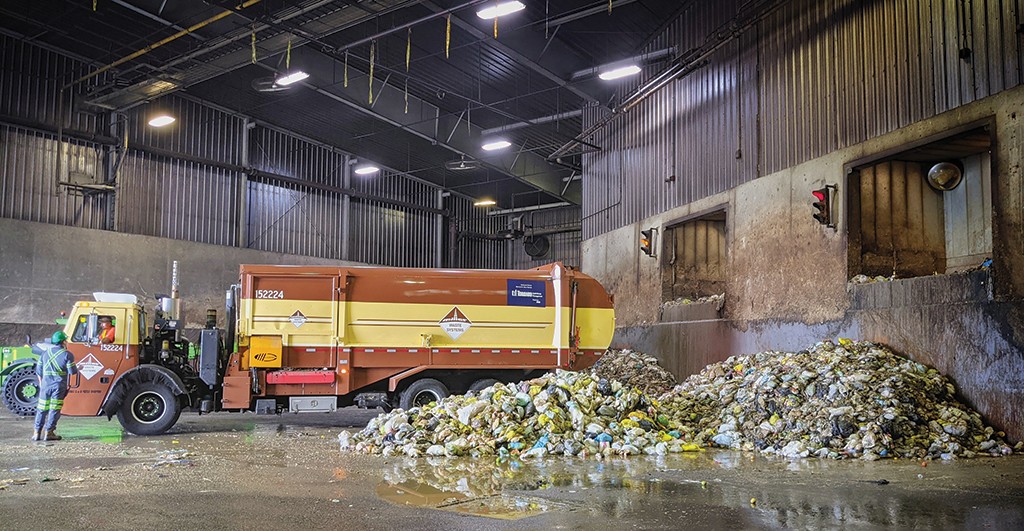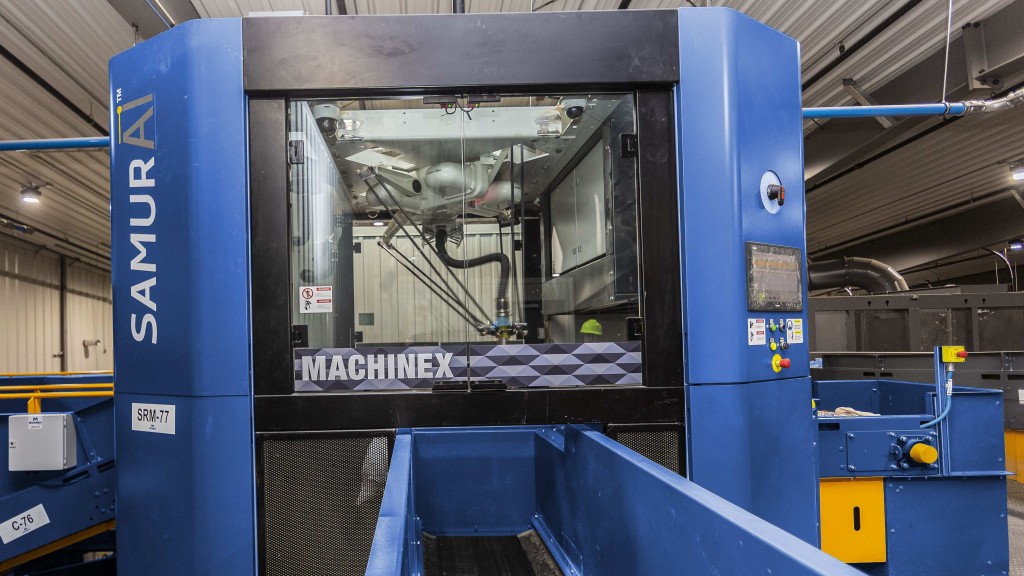
Anaerobic digestion (AD), the process by which bacteria breaks down organic matter without oxygen, and which is currently used worldwide to manage food waste, wastewater biosolids and animal manure, is also increasingly being recognized as a solution to help address the climate crisis. In a growing number of locations around the world, anaerobic digestion facilities divert food waste from landfills; lower greenhouse gas (GHG) emissions, such as methane; and produce both green energy and valuable soil amendments.
According to the USDA, between 30 and 40 percent of the U.S. food supply is lost as food waste, with almost 31 percent of all food waste being produced at the retail and consumer levels. In 2010, this amounted to approximately 133 billion pounds and $161 billion worth of food. Most of it ended up in landfills. With food waste in landfills being one of the largest contributors to methane emissions in the U.S., companies and government officials alike continue to search for methods to improve its diversion.
On the legislative side, there are currently 52 bills in 18 states that sanction food waste policy. In the U.S., Vermont leads this movement with a "no landfill" law for organic waste. The change is happening slowly, however, and while food waste is of urgent concern in the U.S., Canada faces similar challenges in many jurisdictions, but overall, is further along in the transformation to a circular economy for organics. Currently, many provincial and municipal governments have moved forward with landfill disposal bans for municipal and/or commercial organics, including food waste - a first key step in making organics diversion successful.
Benefits of Anaerobic Digestion
AD technology provides municipalities with the ability to process large volumes of organic waste in relatively close proximity to the source of its origin. Through the natural decomposition process, food and organic waste produces methane, a greenhouse gas that traps heat at 85 times the rate of carbon dioxide. By diverting that material from landfill to an AD facility, methane can be converted into biogas, creating a green energy source that reduces GHG emissions and which can be used to replace or supplement existing energy sources at the facility where it is produced. The digestate from organic food waste at AD facilities is further transformed into valuable, nutrient-rich organic matter used to grow food and for other land-based applications.
Best practices
Organics and food waste programs involve complex planning and require extensive knowledge of the processing of municipal and commercial food and yard wastes, wastewater treatment, sludge concentration processes, thermal processes, product marketing and distribution, land application and energy recovery.
There are three predominant AD technologies currently being used in the processing of municipal and commercial organics - wet, dry and plug flow technologies. Veolia is technology agnostic as the technology it selects is primarily based on factors including the type of feedstock received from municipal and/or commercial sources, and desired output from the process to match end markets. It is important to note that AD facilities are entirely different from traditional waste materials handling facilities with respect to logistics, as they are complex with a focus on biology and chemistry.
A critical component of an AD process is the pre-treatment of feedstocks. Municipal organic waste feedstock can have a high plastic content, especially if the collection of food wastes is done using plastic bags. A pre-treatment system removes inert contaminants and other non-digestible elements. The remaining contaminant-free organic slurry is processed through an anaerobic digestion system by which, over a specific time period, it is converted to biogas and digester solids.
Disco Road in Toronto
In Toronto, the City is tackling the residential food waste issue with tremendous success. In 2014, the City expanded its Green Bin Program and built its second anaerobic digestion plant, called the Disco Road Organics Processing Facility (DROPF). Veolia North America, along with its technology partner CCI BioEnergy Inc., operates and maintains the facility which processes 75,000 metric tonnes of residential organic waste generated annually - including food scraps, soiled paper, disposable diapers, feminine hygiene products and pet waste - into beneficial, valuable end products.
The wet source-separated organics (SSO) from Toronto's Green Bin curbside residential food waste collection program is delivered by long-body trailers for discharge in the enclosed tipping floor area. The plastic bagged SSO is then processed via Hydromechanical Pre-treatment System of wet pulpers, grit removal, organics suspension and conveyance. Material then proceeds to a wet AD process using technology engineered BTA International GmbH.
The Disco Road facility receives SSO waste on a five-day-a-week basis and provides seven-day-a-week processing to ensure stable AD process control. An average hourly throughput factor of 81.5 percent is achieved during a typical two eight-hour shifts per day.
Dewatering of the digestate for cake trailer load-out occurs on a 24/7 schedule. Digestate solids are hauled away by a third party to a private composting facility for further end processing into organic Class AA compost for soil amendment. The AD biogas is used for heating the digestion tanks at Disco Road. The City of Toronto has indicated future plans to upgrade this biogas into RNG to help replace its existing energy sources.
The Disco Road Organics Processing Facility has been successfully processing SSO in an urban setting without odour or operational issues through its entire operational history, and is considered a model for other municipal organics processing facilities.
Options in anaerobic digestion
In addition to standalone AD facilities, organic food waste can also be processed at wastewater treatment facilities. As many wastewater treatment facilities already have anaerobic digesters, there is the potential to add more organics at underutilized facilities. This option is particularly attractive to communities seeking to leverage existing municipal infrastructure and is a good option for neighbouring communities to send their organic wastes for processing. The use of on-farm digesters is another option for processing municipal and commercial organic waste; however, this can only be done at much lower volumes, given regulatory constraints.
Non-operational issues in AD
A non-operational issue that is having an impact on the development of AD projects across North America is project delivery. Traditionally, AD projects are developed through public-private partnerships, commonly known as P3s. Traditional P3 models have been successful with social capital (hospitals, long-term-care facilities, etc.) and transportation projects. However, its application with municipal environmental infrastructure projects has become increasingly problematic due to issues such as risk allocation, increased bid costs (which have led to increased project costs), limited engagement in bid processes and other issues.
As a result, project developers and municipalities are moving to a progressive design-build approach to increase collaboration, flexibility and transparency in the project development process. In this approach, the collaborative model engages the operations and maintenance provider up front in the design, construction and commissioning of an AD project delivery. This allows municipalities to focus on key project drivers such as control/risk sharing, costs, schedules, etc. and ensures that lifecycle asset management efficiencies are actively incorporated into design and construction of the facility. It also enables accountability and competitive pricing to optimize project scope, schedule, cost and performance, and provides value-added benefits to the host communities.
There are numerous examples of this approach currently being used across North America, and the trend is expected to continue.
A food waste solution for the future
Diverting all food waste and other organics from landfill is a massive challenge, but vitally important for reducing GHGs - especially methane - and helping to combat the climate crisis. At the municipal level, with ever-increasing demands to improve sustainability and resource efficiency across the board, options are needed for managing organic materials. Anaerobic Digestion technology is an available, proven and effective tool that can provide this option. It efficiently keeps organic waste from landfill while producing both sustainable energy and incredible benefits for agriculture.
Anaerobic digestion must be part of the circular economy for organics going forward. The Disco Road Organics Processing Facility demonstrates that it can be done very successfully.
This article was originally published in the July/August 2021 edition of Recycling Product News, Volume 29, Number 5.




